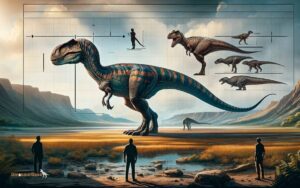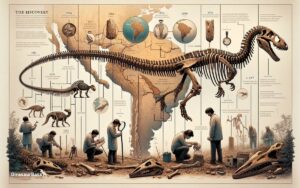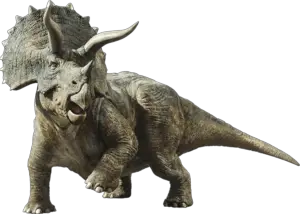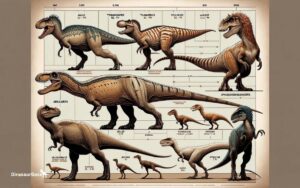Abelisaurus Skull Anatomy: A Comprehensive Guide
The Abelisaurus skull is distinguished by its robust, deep structure and carnivorous features. It showcases an intricate anatomy tailored for a predatory lifestyle.
Discovering the secrets of the prehistoric Abelisaurus’s skull anatomy provides a window into the life of a fierce Cretaceous-period carnivore. Experts keenly study this theropod’s fossil remains to understand its feeding mechanism and sensory capabilities. Unearthing such vital details about the Abelisaurus contributes profoundly to our knowledge of dinosaur evolution and their ecological niches.
This guide serves as an insightful overview, perfect for paleontology enthusiasts and academic scholars alike, eager to delve into the captivating world of dinosaur research. Unique skull characteristics, such as specialized teeth and potential for binocular vision, underscore the Abelisaurus as a remarkable creature of its time.
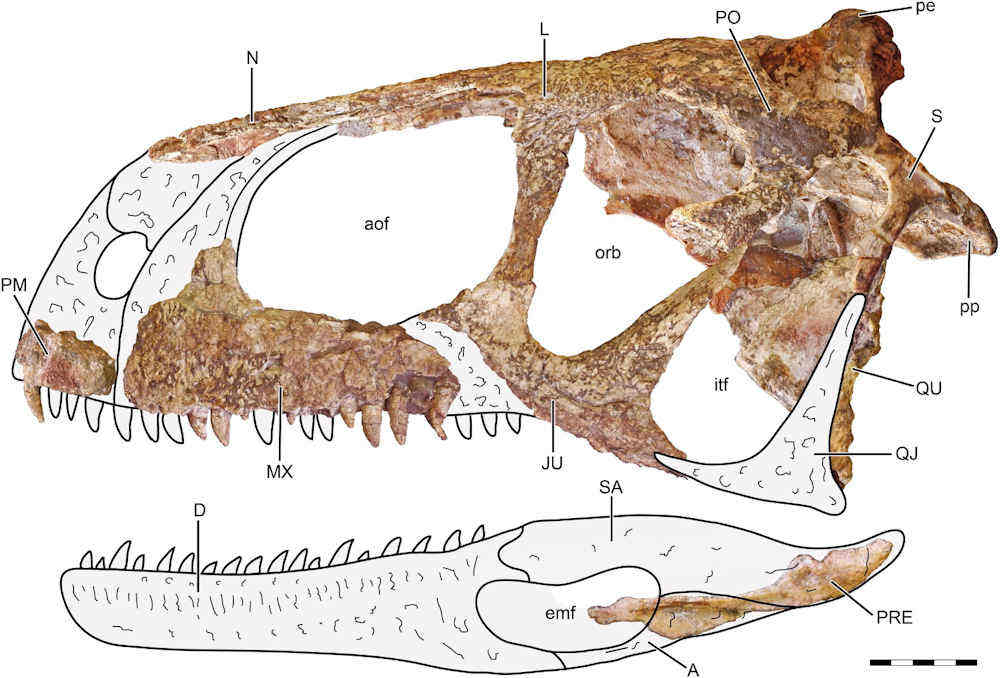
Unearthing The Abelisaurus
The thrill of discovery often leads us to the far corners of the world. In the case of the Abelisaurus, it led to a remarkable find in the land of Argentina. Let’s dive into the world of this prehistoric predator and uncover the secrets it held within its formidable skull.
The Discovery Of Abelisaurus
An Argentinian summer in 1985 brought more than just warm breezes. A fossil hunter, Roberto Abel, stumbled upon a skull. It was unlike any other. It was the first evidence of the Abelisaurus, a creature of the Late Cretaceous. Roberto Abel’s finding was just the start of a much bigger story.
The skull, buried in the Patagonian rocks, was well-preserved. It gave scientists a rare glimpse into the life of carnivorous dinosaurs. The skull’s features were peculiar. This earned the dinosaur the full name Abelisaurus comahuensis, meaning “Abel’s lizard”.
- Location of discovery: Patagonia, Argentina
- Year: 1985
- Discoverer: Roberto Abel
The Significance In Paleontology
The Abelisaurus stood out in the Cretaceous theatre. Its skull anatomy is a window into past ecosystems. It showed adaptations for a dominant predator.
Its discovery was a touchstone for theropod research. Theropods are a group of dinosaurs that include the fearsome T. rex. The Abelisaurus added to our knowledge of their diversity.
| Feature | Significance |
|---|---|
| Skull Size | Indicates predator’s size and hunting capabilities |
| Teeth and Jaw Structure | Offers clues to diet and feeding habits |
| Fossil Rarity | Highlights importance and uniqueness of discovery |
The Abelisaurus skull informs us on their behavior and role in prehistoric life. It is a beacon for scientists seeking to comprehend the ecosystems of yesteryears.
Credit: www.thoughtco.com
Features Of The Abelisaurus Skull
Exploring the skull of the Abelisaurus reveals a window to its past behaviors and ecological role. This remarkable dinosaur, which roamed the ancient lands during the late Cretaceous period, possessed an array of interesting features in its skull structure, standing out among its theropod relatives.
Distinctive Cranial Structures
The Abelisaurus skull boasts unique characteristics that set it apart. Its standout feature is most certainly the unusually short and high skull, which suggests a remarkably powerful bite. Fused nasal bones and prominent crests above its eyes made for a fearsome appearance.
- Short, deep snout – indicated adaptations for specific prey
- Robust teeth – designed for piercing and gripping
- Hollow cavities – possibly to lighten the skull or amplify sounds
Comparative Size And Proportions
The size of the Abelisaurus skull was formidable when compared to its body size. Its head was large, but with a light framework overall—features hinting at evolved predatory tactics.
| Feature | Description | Implication |
|---|---|---|
| Skull Length | Estimated at over 85 centimeters | Large, formidable head |
| Skull Width | Narrow construction | Streamlined for hunting |
| Orbit Size | Large and forward-facing | Indicative of good vision and depth perception |
Diet And Hunting Tactics
Understanding the diet and hunting methods of Abelisaurus offers insight into their life millions of years ago. The skull anatomy reveals much about their eating habits. Let’s uncover what these fascinating dinosaurs fed on and how they caught their prey.
Teeth And Jaw Mechanics
The teeth and jaw of Abelisaurus were formidable tools for feeding. Their jaw structure suggests a strong bite force. This made it easier to grip and dismantle prey.
- Sharp teeth tore through flesh with ease.
- Their serrated edges helped in cutting through tough skin.
- Powerful jaw muscles aided in their biting capabilities.
Predatory Strategies Inferred From Skull Anatomy
The skull features of Abelisaurus hint at its predatory strategies. Its anatomy was well-suited for capturing prey. The design of its skull provided clues about how it hunted.
- Broad skull allowed for a strong bite.
- Eye placement gave it good vision for spotting prey.
- Skull flexibility may have helped in securing struggling prey.
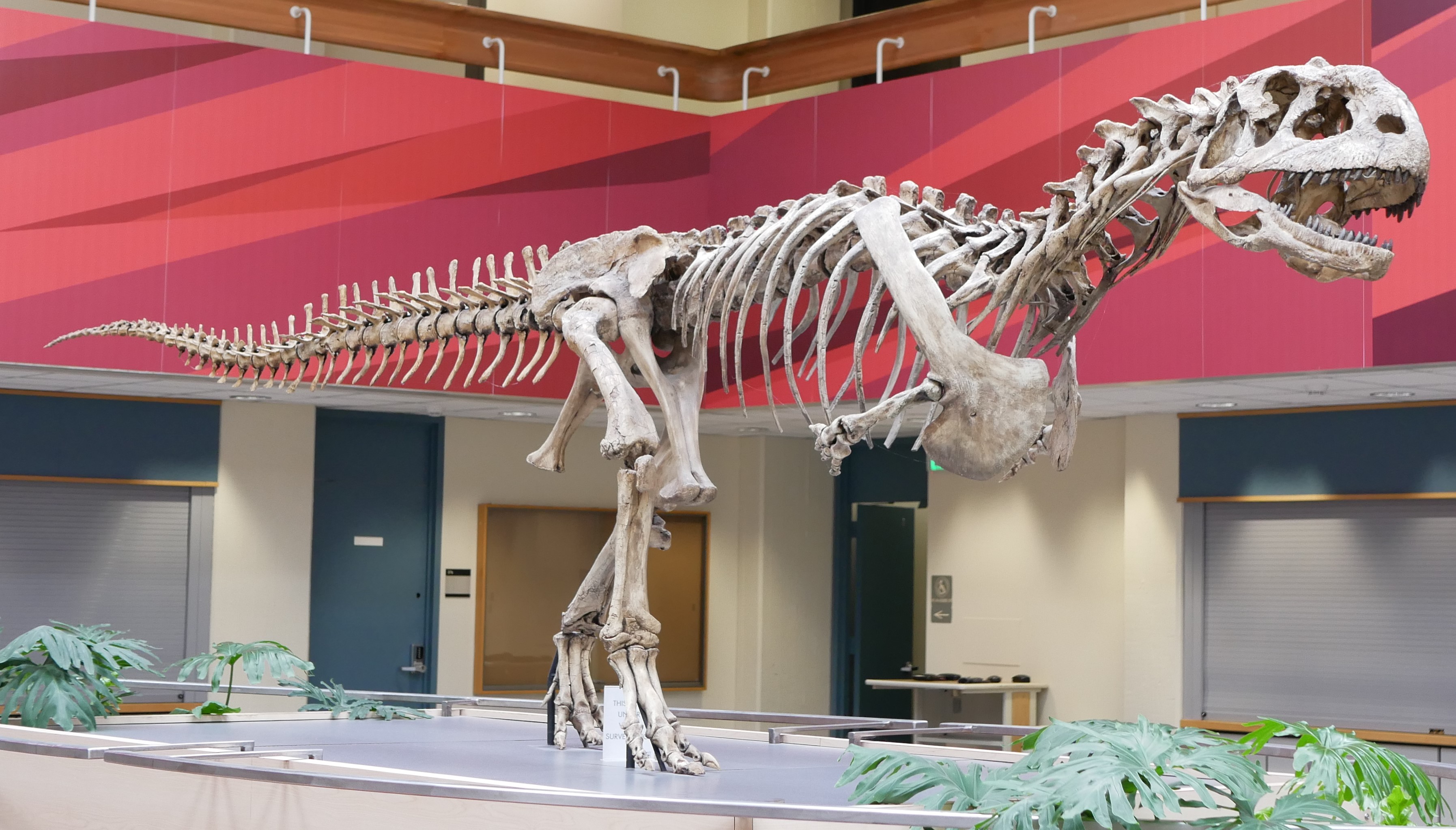
Credit: en.wikipedia.org
Senses And Cognitive Abilities
Delving into the skull anatomy of Abelisaurus reveals much about its senses and cognitive prowess. These carnivorous dinosaurs relied heavily on their primary senses for hunting and survival. In this segment, we uncover the mysteries behind their sight and smell capabilities, along with the intelligence that the braincase suggests.
Orbit And Olfactory Bulb Insights
The orbits, or eye sockets, were a window to Abelisaurus’s visual acumen. Large orbits indicate the potential for good vision, vital for an apex predator. Analyses show that the eye placement offered a wide field of view. The eye size hints at adeptness in different light conditions, possibly including dusk and dawn hunting.
- Large eye sockets for expansive sight
- Eye placement allows wide field of vision
- Adaptable to various light levels
Equally intriguing are the olfactory bulbs, which tell us about the sense of smell. Fossils suggest that Abelisaurus possessed large olfactory regions, pointing to a keen sense of smell. This faculty would have been critical for detecting prey, navigating environments, and social communication among species members.
- Large olfactory bulbs indicate a strong sense of smell
- Crucial for hunting and social cues
Braincase Studies And Intelligence Estimates
The Abelisaurus braincase gives clues to its intelligence. The size and structure of the braincase help paleontologists estimate cognitive abilities. Although not as large as in some later predators, the complexity of the brain suggests a certain level of smarts.
- Braincase size and shape reflect cognitive ability
- Complex brain structures imply problem-solving skills
Studies indicate that brain organization in Abelisaurus was advanced, with specific areas possibly dedicated to complex behaviors. This might have included strategic hunting tactics and social interactions. The overall structure of the braincase, thus, suggests a dinosaur with intelligence that was formidable among its peers.
| Braincase Feature | Implication for Intelligence |
|---|---|
| Size | Comparatively sizable for cognitive functions |
| Structure Complexity | Potential for problem-solving and learning |
Using modern imaging techniques, paleontologists can create three-dimensional models. These often reveal a more detailed insight into the neuroanatomy of dinosaurs like Abelisaurus, providing a more accurate intelligence estimate.
- Advanced imaging for detailed brain structure
- Models assist in accurate cognitive assessment
Skull Damage And Healing
The skull of Abelisaurus reveals tales of survival in the Mesozoic era. We often find fossils showing signs of damage. Studying these marks helps us understand how the dinosaur lived. Skull Damage and Healing in Abelisaurus provides a window into their world, showcasing their resilience and interactions.
Signs Of Injuries And Healing In Fossils
Examining fossilized skulls, paleontologists notice various injuries. These include:
- Fractures: Cracks in the bone.
- Punctures: Deep holes from sharp objects.
- Grooves: Marks from scraping against hard surfaces.
Healing signs in the fossils indicate past wounds:
- Bone Fusion: Edges of a fracture grow back together.
- New Bone Growth: Bumpy textures on the surface of old injuries.
- Smoothing: Over time, marks may become less distinct.
| Injury Type | Healing Sign |
|---|---|
| Fractures | Bone Fusion |
| Punctures | New Bone Growth |
| Grooves | Smoothing |
What This Tells Us About Abelisaurus Behavior
The Abelisaurus skull provides clues about their lifestyle:
- Aggressive encounters: Likely fought with peers.
- Hunting mishaps: Wounds might come from prey fights.
- Environmental factors: Running into trees or falling could cause injuries.
Injuries that healed suggest Abelisaurus were survivors. Their ability to recover from wounds points to a robust healing process.
These insights paint a picture of a rugged, dynamic dinosaur capable of enduring the challenges of its environment and possibly engaging in complex social behaviors.
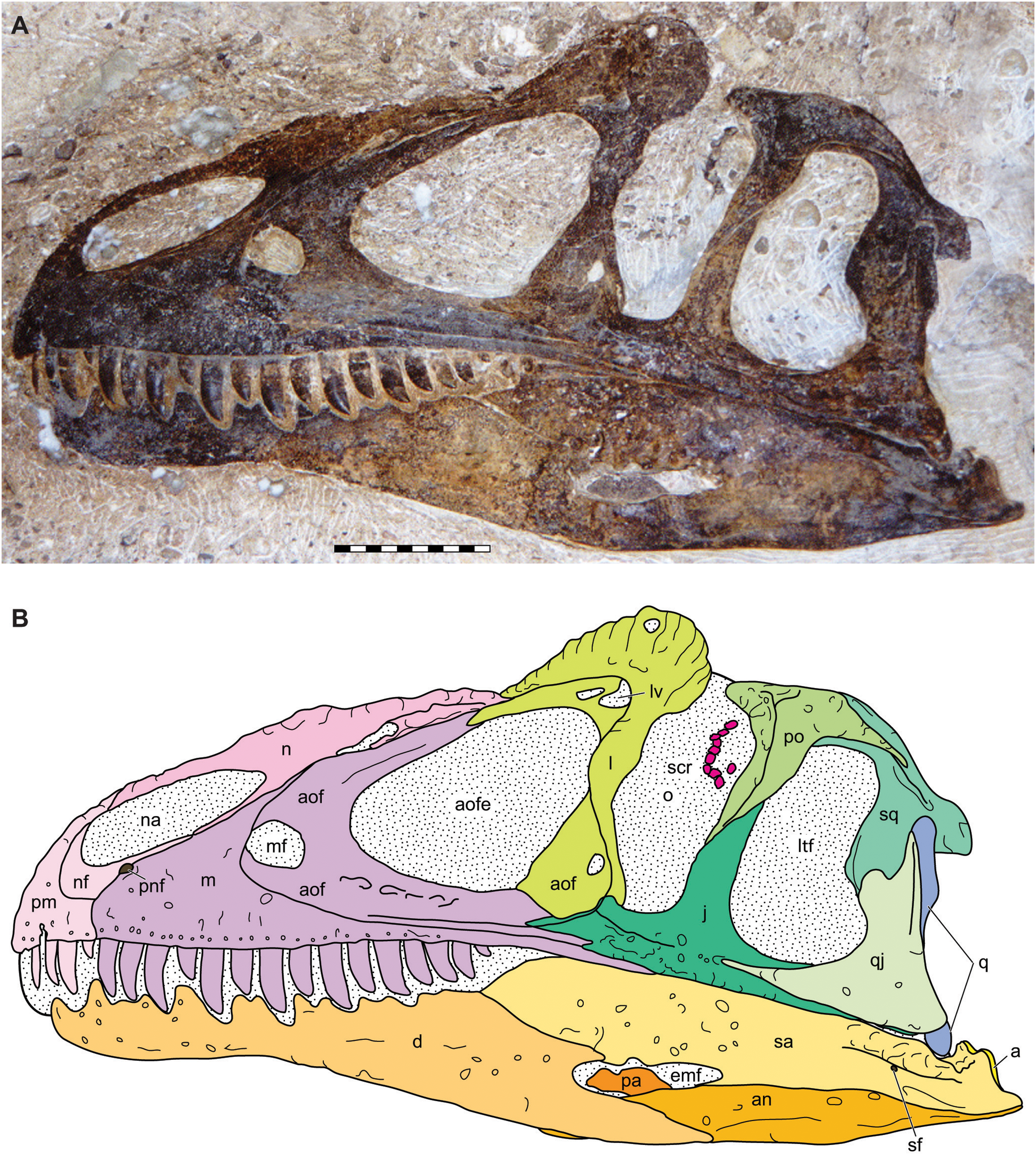
Credit: peerj.com
Evolutionary Relationships And Comparisons
The Abelisaurus skull tells a story. It links this fierce predator to the bigger family of theropods. This section explores the fascinating connections and differences within these ancient creatures.
Connecting Abelisaurus To Other Theropods
The Abelisaurus is part of the theropod group. Theropods are two-legged carnivores. Dinosaurs like the T. rex and Velociraptor are famous examples.
- Shared features include sharp teeth and powerful jaws.
- Abelisaurus has a unique skull shape among theropods.
- Its lineage can be traced to the late Cretaceous period.
Scientists study skull fossils to understand these connections. It helps to know how dinosaurs evolved. It shows what they might have looked like.
Skull Variability Within Abelisauridae Family
Dinosaurs in the Abelisauridae family had different skulls.
| Dinosaur | Skull Length | Notable Features |
|---|---|---|
| Abelisaurus | 85 cm | Short snout, robust structure |
| Carnotaurus | 60 cm | Horns above the eyes |
| Majungasaurus | 70 cm | Thickened skull roof |
Each dinosaur had traits to help it survive. The Abelisaurus skull is not as long as others. But it was strong and sturdy. This may have affected how it hunted and lived.
Conclusion
Diving into the Abelisaurus skull reveals a prehistoric world’s wonders. We’ve unearthed its mysteries layer by layer. Explorers of ancient creatures now possess deeper insights. Let’s keep questioning and learning. For paleontology enthusiasts eager to further this journey, stay tuned for more thrilling discoveries from the time of the dinosaurs.

